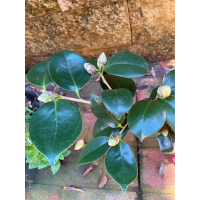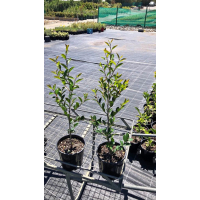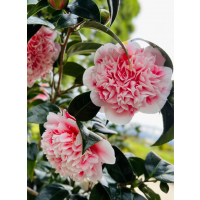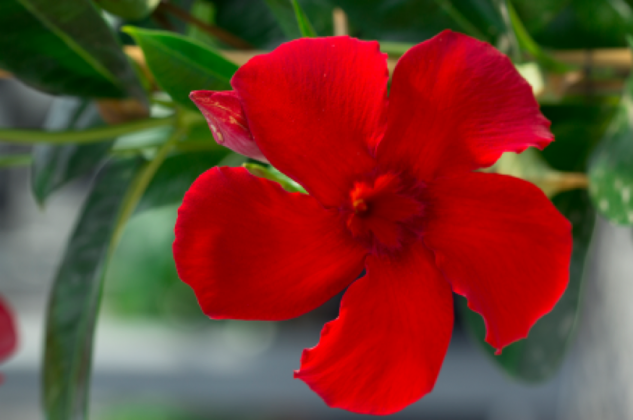




Camellia
Category : Flowering Plants
Camellias are stunning, evergreen shrubs known for their glossy, dark green leaves and exquisite, rose-like flowers. These beautiful plants are perfect for adding elegance and charm to your garden or home.
Camellias come in two main types: Japonica and Sasanqua. Japonica varieties are known for their larger flowers and are typically more shade-tolerant, while Sasanqua types bloom earlier and can tolerate more sun.
Quick Facts:
- Botanical Name: Camellia
- Height: 2 to 20 feet (0.6 to 6 m)
- Spread: 5 to 10 feet (1.5 to 3 m)
- Sun Exposure: Partial shade to full sun
- Soil Requirements: Well-draining, acidic soil
- Hardiness Zones: USDA 7-9
- When to Plant: Autumn or spring
Camellia Care
Most camellias are easy to care for, but they do require some specific conditions to thrive.
Light
Camellias prefer partial shade but can tolerate full sun, especially the Sasanqua varieties. Too much direct sunlight can scorch the leaves, while too much shade can reduce flowering.
Water
Camellias like consistently moist but well-drained soil. Water deeply to encourage deep root growth, but avoid waterlogging, which can cause root rot. Mulching around the base helps retain moisture and keeps the roots cool.
Temperature & Humidity
Camellias thrive in cool, humid climates. They prefer temperatures between 45-65°F (7-18°C). They are not frost-tolerant and should be protected from harsh winter conditions. High humidity levels are beneficial, so misting the leaves or placing the plant on a humidity tray can help.
Soil
Camellias require well-draining, acidic soil with a pH between 5.5 and 6.5. A mix of peat, compost, and pine bark is ideal. Avoid using heavy clay soils as they can retain too much water.
Fertilizer
Fertilize camellias in spring after flowering with a balanced, acid-forming fertilizer. Avoid over-fertilizing, which can damage the roots and reduce flowering. Apply fertilizer around the drip line of the plant and water it in well.
Encouraging Camellias to Bloom
To encourage more blooms, prune camellias lightly after flowering to remove spent flowers and shape the plant. Avoid heavy pruning as this can reduce the number of flowers. Providing adequate water and nutrients during the growing season will also support better blooming.
Repotting
Repot camellias every 2-3 years to refresh the soil and provide more space for root growth. Use a slightly larger container with good drainage holes and fill it with a well-draining, acidic soil mix.
Propagating Camellias
Propagate camellias by taking semi-hardwood cuttings in late summer. Use a sharp, sterile knife to cut a 4-6 inch section just below a leaf node. Remove the lower leaves and dip the cut end in rooting hormone. Plant the cutting in a pot filled with a well-draining soil mix and keep it moist until roots develop.
Types of Camellias
- Camellia Japonica: Known for their large, rose-like flowers and shade tolerance.
- Camellia Sasanqua: Blooms earlier with smaller flowers and can tolerate more sun.
- Camellia Sinensis: The leaves of this variety are used to produce tea.
- Camellia Reticulata: Features large, showy flowers and vigorous growth.
- Camellia Hiemalis: Compact plants with a profusion of smaller flowers.
Visit Sai Nursery in Sydney to explore our diverse collection of camellias and find the perfect addition to your home garden!
Price : $35
$28
Out of Stock










